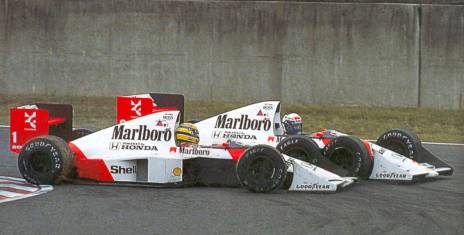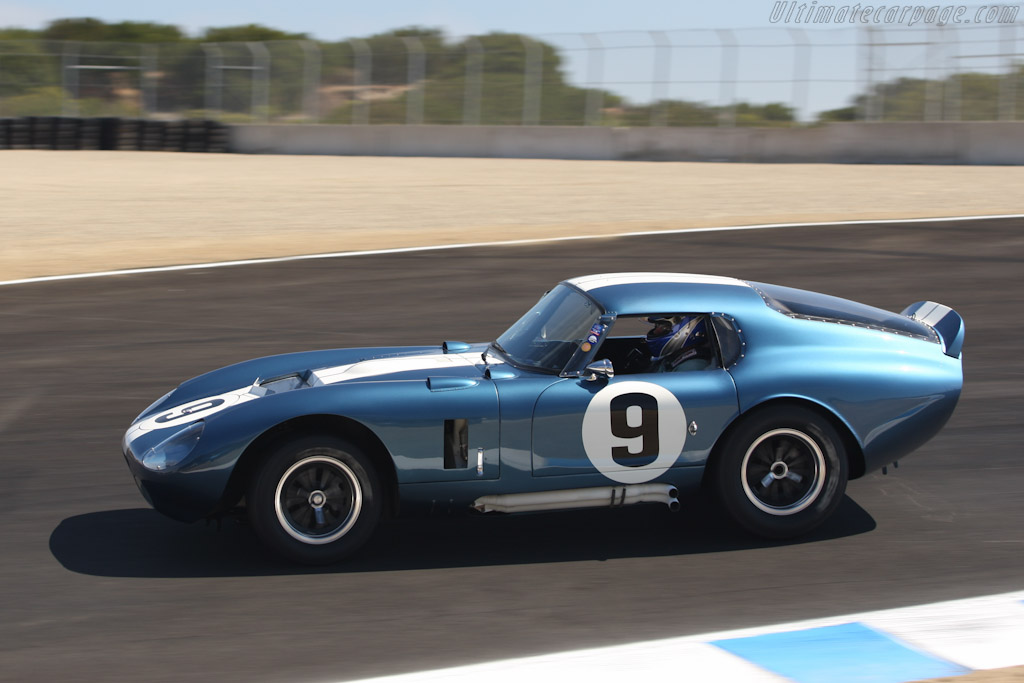In 1984, a man from Brasil became a Formula 1 driver. He went on for 10 years, capturing 65 pole positions, 80 podium finishes, and 41 victories. The result of all this, at the very end, was both tragic and eye-opening.
Today, he is considered the greatest man ever to drive a car on Earth.
Ayrton Senna was no ordinary man. Born on March 21st, 1960, he started go-karting at the age of 4, entered karting competitions at 13, and won his first championship at 17. Seven years later, after racing in single-seat racing series such as the Formula Ford and Formula 3 championships, he signed contracts with the Toleman F1 team.

In his sixth race in his career at the Monaco Grand Prix, he made a deep impression on the world. The track was soaking wet and pouring with rain. The race leader, Alain Prost, was 15 seconds ahead of Senna, who'd worked his way up into second place after starting in 13th. Senna (a rookie mind you) was catching Prost at nearly 3 seconds a lap; 5 laps, and he would be able to overtake for the lead. However, the weather became so bad that the race was halted, and Senna, who could've easily won the race had it gone for another few laps, came in a second which stunned the world. Important considering he was driving in a car that was generally not competitive and IT WAS HIS SIXTH RACE.
Senna moved to the Lotus F1 the next year, and stayed there until he was signed to McLaren in 1988. He won his first race in 1985, at Portugal. Surprise, surprise: it was raining there too. There's a reason Senna is called the wet weather god.
When Senna moved to McLaren, he became the teammate of at-that-time two time World Champion Alain Prost. That year, he won the World Championship over Prost, which became the basis of their legendary duel over the next few seasons.
The 1989 was one filled with the rivalry between Senna and Prost. By the second-to-last race of the season at the Japan GP, Prost was in a position to win the championship if Senna didn't finish. Senna needed to win the race in order to stay in contention. On lap 46 out of 53, Senna dove in to overtake at the final corner, but the two came together. Prost's car stalled, but Senna, with his engine running, was pushed onto the escape road and rejoined the track to win the race. After a long talk with the stewards and President of the FIA, Senna was disqualified, fined $100,000, and received a 6-month license suspension. Prost won the championship.

A year later, the rivalry continued, but Prost had moved to Ferrari. At the Japan GP one year after the 1989 incident, the situation was opposite.This time, Senna was in a position that he would win the championship if Prost didn't finish, and Prost needed to stay in contention. When the race started and the cars came to the first corner, Senna dove in for the corner with Prost on the outside, only to ram into him and result in both driving off the track. Senna won the championship.
Senna won his third championship in 1991 (Prost had no wins, and was sacked from Ferrari after criticizing the team). Over the next two seasons, Senna's luck descended. In 1993, his McLaren was suddenly dwarfed by the power of the Williams F1 team's new traction and stability control systems. The season was dominated by the strength of machine over the skill of man. Senna, a pure driver, was at a disadvantage.
But don't get me wrong. Some of Senna's best moments came from 1993. At Donington Park GP, the race was started under wet weather. Senna was immediately overtaken and moved down to 5th position. Overtaking each person in front one at a time at each corner, Senna moved from fifth to first in ONE lap.
ONE.
At the end of the 1993 season, it was decided that Senna would leave McLaren and move to the Williams team.
This would be a mistake. The FIA banned all the technological equipment that was used in the last season. The glorious Williams car became an uncontrollable monster. Senna had a very difficult time dealing with it, and he was clearly not in touch with the car.
On the morning of April 29th, the practice for the Grand Prix of San Marino began. That day, rookie Rubens Barrichello (yes, Mr. Barrichello was once a rookie after all these years) had a terrible accident. He obviously survived, but was injured. The next day during qualifying, Austrian racer Roland Ratzenberger collided into a wall at full speed. Qualifying was halted, and Ratzenberger was taken to the hospital. He died later that day.
Senna contemplated whether or not to race. After deciding to go on with it, he started the race in pole position. Other crashes quickly brought the yellow flag, and at the restart on the 6th lap, Senna had a lead over second place Michael Schumacher (he's still racing, just so you know). As he approached the Tamburello corner, he veered straight off the track and into the wall at 200 mph.
The right side of the car was ripped off. The suspension bracket slammed into his head and left him brain-dead. He was extracted from the car, and an on-site tracheotomy was performed.
Ayrton Senna was pronounced dead soon later. The world had lost a great. Brasil declared three days of mourning in his honor.
I love Senna. He was an amazing, incredible, unbelievable person. I have no more to say.
Long live Ayrton Senna.
AV



















